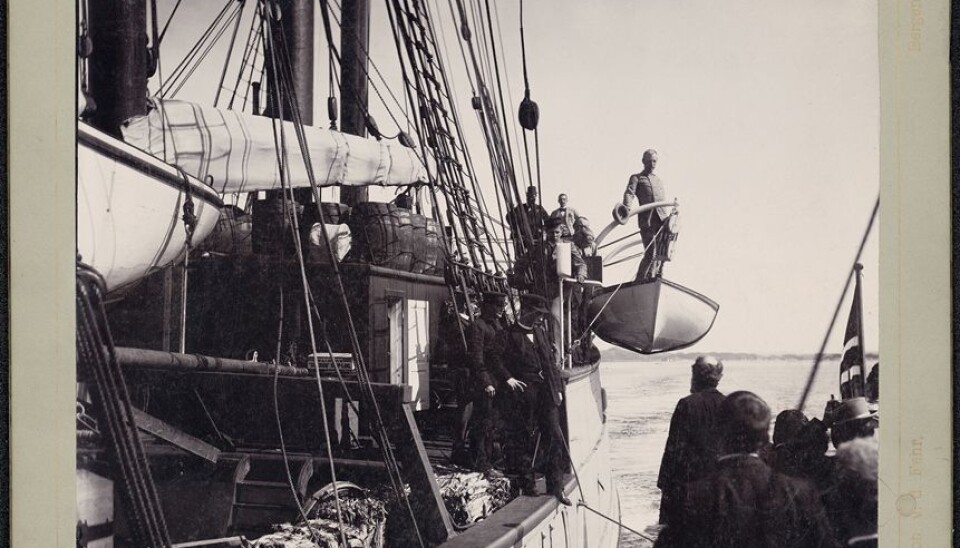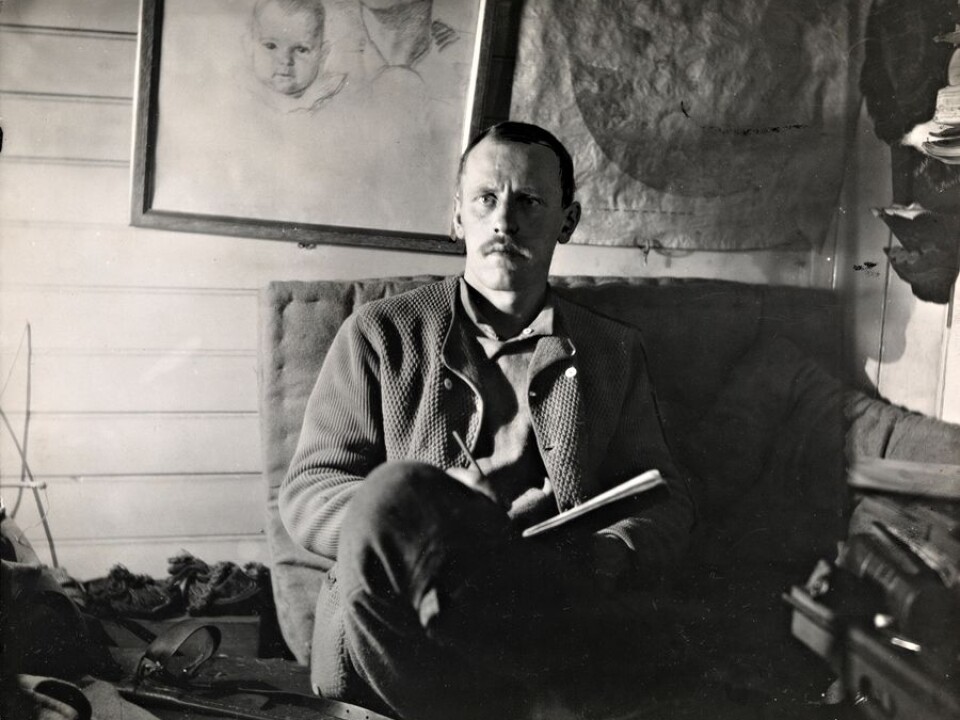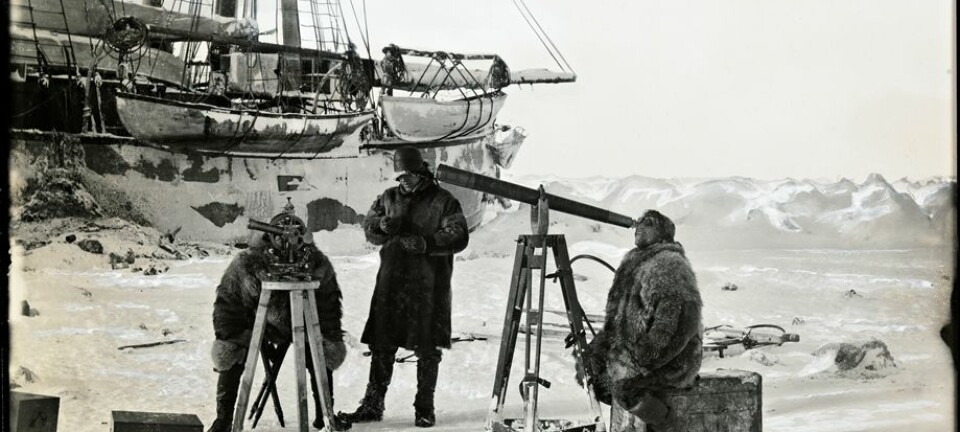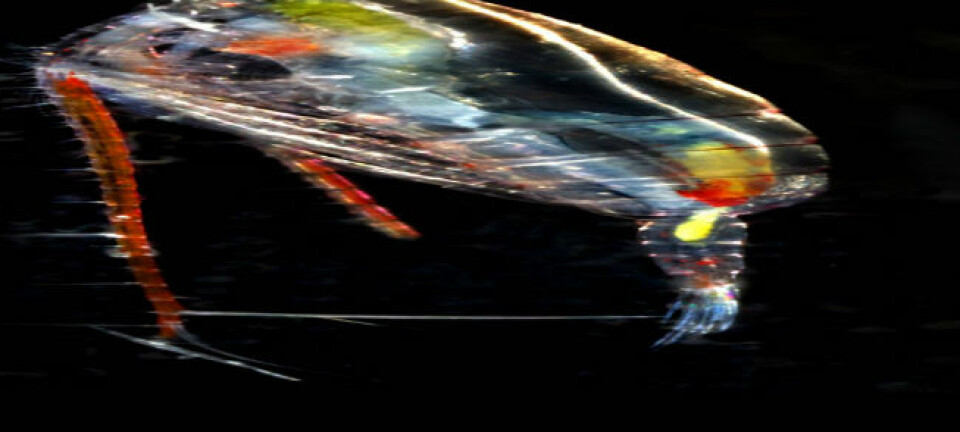
Nansen’s legacy lives on 120 years after polar adventure
Fridtjof Nansen’s 120-year old research results still influence polar science today. The Norwegian Polar Institute even hopes to follow in Nansen’s footsteps by freezing their own research vessel into the Arctic ice.
Denne artikkelen er over ti år gammel og kan inneholde utdatert informasjon.
Fridtjof Nansen’s life after the 1893-1896 voyage of the Fram took many turns. He pursued his pioneering oceanographic research in the North Atlantic for another decade, but subsequently went on to become one of Norway’s leading politicians and statesmen. His humanitarian efforts won him the Nobel Prize in 1922.
But the Fram’s 120-year old measurements continue to have a surprising influence on polar science, says University of Oslo historian Robert Marc Friedman.
The Fram’s scientific results “are some of the most significant building blocks in our contemporary understanding of physical oceanography, and with that, the understanding of the dynamics of climate in the northern hemisphere,” he said.
While Nansen’s measurements of depths, temperatures and ocean water salinities were relatively crude, these data opened new perspectives for geophysical science.

“Even Nansen was surprised by the most important discovery of the expedition – rather than being a shallow body of water, the polar sea is actually a deep ocean, twice as deep as Nansen had anticipated,” Friedman said.
The Fram was equipped with a 2000 metre long sounding line to measure ocean depths, but it proved to be too short for the task. The crew removed all the lines from the Fram’s rigging to nearly double the length of the line, which enabled them to measure a depth of 3900 metres.
That meant there was far more water in the northern hemisphere than scientists had previously believed.
“Nansen immediately understood that the deep Arctic Ocean necessarily plays a crucial role in the hemispheric system of currents and with that, is also a key to comprehending climate and weather patterns,” Friedman says.
Modern oceanography, meteorology

An important spinoff of this resulted when Nansen later discussed the Fram’s findings with the Norwegian physicist Vilhelm Bjerknes, who was in Stockholm at the time.
Friedman says that Nansen’s many questions – and his hard data – encouraged Bjerknes to apply his mathematical models of fluid dynamics to problems in oceanography and meteorology.
Bjerknes also involved several of his promising students in solving Nansen’s puzzles, including Vagn Walfrid Ekman. Ekman used Nansen’s observations to come up with a scientific model for explaining the so-called ‘dead water’ phenomenon (see below) as well as for wind-driven currents.
These results not only helped revolutionize our understanding of ocean circulation, Friedman said, but changed the course of Bjerknes’ life.
Bjerknes decided “to abandon mathematical physics to devote himself to develop a more rigorous science of the atmosphere and oceans,” Friedman said. “Two decades later, he and his assistants founded the Bergen School of Meteorology, which is widely recognized as a major contribution to the modern science of weather forecasting.”
Internal oscillations
Nansen’s careful observations and measurements continue to provide a trove of data that Professor John Grue, from the University of Oslo’s Department of Mathematics, can use to understand different underwater waves in the ocean.
These underwater waves can be quite strong and large. They also have major significance today, especially as more and more of the Norwegian oil and gas infrastructure moves to the ocean floor, Grue says.
For example, the Ormen Lange gas field, off Kristiansund in southeast Norway, has underwater installations that are at 800 to 1,100 metres deep. Here, the “internal oscillations,” or the underwater waves that Nansen first reported, can have an amplitude of 300 metres and a speed of 1 knot, Grue says.
Dead water and more
Nansen also observed something off the Siberian coast called “dead water.” Even though the Fram was motoring along at full speed in calm water, it made very little headway. Nansen observed that the surface layer of the ocean was very fresh, while at the level of the engine room the water was quite salty.
Grue says the reason for this is that as the Fram moved through the fresh water, the force of the boat set up a series of waves right at the boundary where the fresh water and salt water met. The waves provided resistance that kept the Fram from making progress.
The measurements were sufficiently detailed that Grue presented his latest analysis of Nansen’s observations of dead water at an April 2013 international conference on water waves and floating bodies, held in France. “Nansen’s data are solid,” he says.
Layers in the ocean
Nansen also made careful measurements of the temperatures and salinities of the ocean water at different depths, and found different layers.
“He recognized that measuring different types of water, based on salinity and temperature, would enable him to determine the origins of the water,” Friedman said.
A deep flow of warm salty water, for example, represented the remnants of the Gulf Stream, which was detectable as far north as Siberia. The top layer of water was cold and not very salty, because of all the fresh water that flowed into the ocean from huge Siberian rivers.
And the deepest layer was cold and salty, but warmer and denser than the deep waters found in the Norwegian Sea, Nansen realized.
The only explanation was that the water had to have different sources. Nansen thus postulated that there had to be some kind of underwater ridge between Svalbard and Greenland that kept the two different kinds of bottom waters separate. Soviet scientists later found the ridge in the 1950s.
In an interesting commentary on the heated international politics of the polar oceans, its name – once the Nansen Cordillera – was officially changed to the Gakkel Ridge in 1987, after a Soviet oceanographer who also predicted its location.
Oceanographer Svein Østerhus, from the Bjerknes Centre for Climate Research at the University of Bergen, has also used Nansen’s data in his own published research on changes in temperatures and salinities in the Arctic seas over time. “The earliest measurements that we can really use go back to Nansen,” Østerhus says.
A unique platform
Researchers at the Norwegian Polar Institute now hope to undertake their own version of Nansen’s drift through the polar ice. They’ve applied for NOK 33 million from the Research Council of Norway to freeze their soon-to-be-retired research vessel, the Lance, into the ice for the winter of 2014-2015.
The main goal is to study six different aspects of the relationship between the Arctic ice, the ocean and the atmosphere in the winter, says Jan-Gunnar Winther, director of the Polar Institute. “The data we have from the Arctic ice in the winter is very sparse,” he says. “This would provide us a unique platform
Although climate researchers have information about Arctic sea ice from satellites and previous research cruises, the character of the Arctic ice pack has changed very rapidly over the last decade as the Arctic has warmed and the extent of the summer ice cover has shrunk, Winther says. This lack of information has led to a great deal of interest in the project from other international research groups, he said.
Changing ice, costly data
The Arctic ice pack used to be composed mainly of ice that had formed and existed over many years. But now, as more of the summer arctic ice pack melts away, more and more of the Arctic’s winter ice cover is only one year old, says Harald Steen, Winther’s colleague and head of the institute’s Centre for Ice, Climate and Ecosystems.
That matters because climate models that predict how global warming will affect different parts of the globe rely on older data from the Arctic, when there was much more multi-year ice.
“First year ice has very different properties” than multi-year ice, Steen said. “It has different optical properties, it is more saline, it is thinner and the thermodynamics is different.”
Not everyone thinks the Polar Institute’s plan is the best use of that much money, however. The University of Bergen’s Østerhus says that there are other sources for some of the data the Lance would collect. And he believes that any new data on first-year ice could be obtained at much less cost without freezing the Lance into the ice.
“I am sure that they can do good science,” Østerhus said. “But I am not sure this is the best way to use this much money. There are ways to do it cheaper and better."
This is the second of two articles on Fridtjof Nansen and his polar adventures and research. Read part one: Frozen in the ice - polar research then and now

































